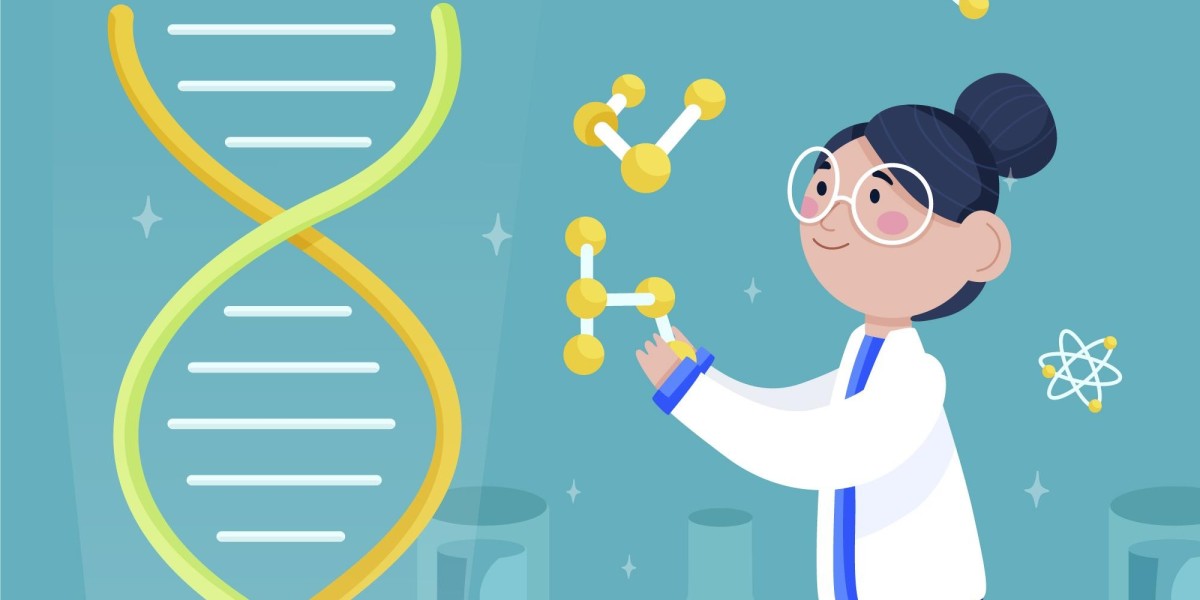Genetics is the foundation of life, influencing everything from our physical traits to our risk of certain diseases. At the heart of genetics lies the concept of gene mutations—changes in the DNA sequence that can have profound implications. In this blog, we’ll explore the types of gene mutation and their significance in health and disease.
What Are Gene Mutations?
Gene mutations are alterations in the nucleotide sequence of DNA. These changes can happen naturally during DNA replication or be triggered by environmental factors like radiation and chemicals. Understanding these mutations is key to unlocking the mysteries of genetics and how they shape our health.
Types of Gene Mutation
1. Point Mutations
Point mutations are the simplest type of mutation, affecting a single nucleotide. They are classified into three main categories:
Silent Mutations: These do not change the resulting protein. For example, a change from GAA to GAG still codes for glutamic acid, meaning the protein functions normally, although expression levels might vary.
Missense Mutations: These mutations result in a different amino acid being incorporated into a protein. A classic example is the mutation responsible for sickle cell anemia, where a single nucleotide change alters hemoglobin's structure.
Nonsense Mutations: These create a premature stop codon, truncating the protein. For instance, a change from UAC (tyrosine) to UAA leads to an incomplete, often nonfunctional protein.
2. Insertions and Deletions
Insertions and deletions (collectively known as indels) involve the addition or removal of nucleotide bases:
Insertions can add one or more nucleotide pairs, potentially disrupting the reading frame and leading to significant changes in protein function.
Deletions remove nucleotide pairs, which can also shift the reading frame and result in frameshift mutations, altering the protein structure dramatically.
3. Frameshift Mutations
These mutations occur when insertions or deletions are not in multiples of three nucleotides, shifting the entire reading frame of the genetic code. This often leads to completely different proteins, typically resulting in nonfunctional products.
4. Copy Number Variations (CNVs)
Copy number variations involve changes in the number of copies of a specific gene or genomic region:
- Duplications can lead to extra gene copies, which may be associated with conditions such as some cancers or neurodegenerative diseases.
5. Inversions
Inversions occur when a segment of DNA is reversed:
Pericentric Inversions involve the centromere and can rearrange gene positions.
Paracentric Inversions do not include the centromere and can create challenges during cell division.
6. Translocations
Translocations involve segments of DNA being rearranged between non-homologous chromosomes:
Reciprocal Translocations involve the exchange of segments between two chromosomes, which can disrupt gene function or create fusion genes.
Robertsonian Translocations occur when the long arms of acrocentric chromosomes fuse, potentially leading to genetic disorders like Down syndrome.
7. Expanding Repeats
Expanding repeat mutations involve sequences of DNA that are repeated multiple times. An example is the CAG repeat expansion in the HTT gene, associated with Huntington’s disease, leading to neurodegeneration.
The Role of Genetic Testing
Genetic testing plays a crucial role in identifying mutations and understanding their implications for health:
Diagnosis: Genetic testing can pinpoint specific mutations linked to various genetic disorders, providing clarity for affected individuals.
Carrier Testing: This determines if a person carries a mutation that could be passed to future generations, even if they show no symptoms.
Predictive Testing: Some tests can assess the likelihood of developing certain genetic conditions before any symptoms appear.
Pharmacogenomics: Testing can reveal how genetic variations affect drug metabolism, allowing for tailored medication strategies.
Screening: Prenatal and newborn screenings help detect genetic disorders early, enabling timely interventions.
Ethical Considerations
The intersection of gene mutations and genetic testing raises important ethical questions. Issues related to privacy, informed consent, and potential discrimination must be navigated thoughtfully to ensure fair treatment and respect for individuals' genetic information.
Conclusion
Gene mutations are essential to understanding the diversity of life and play a significant role in health and disease. Through genetic testing, we can uncover insights that inform diagnoses, treatment options, and risk assessments. As advancements in technology continue, the promise of personalized medicine grows, offering new avenues for improving health outcomes. Always consult healthcare professionals when considering genetic testing to make informed choices about your health journey.







